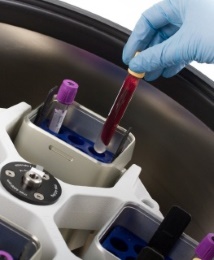Introduction of Clinical Chemistry

All of the visible invisible objects and materials around, are constituted by the chemical composition - of course, also including the human body. Analyzing the chemical composition of human body is the scope of clinical chemistry research. It is used to analyze the chemical composition of human body, in order to understand the health status, or to identify the disease. In Taiwan, every day, there are many clinical chemistry laboratories apply various of chemical experiments. It helps the healthcare providers obtain a diagnosis and develop a treatment plan.
Human body is composed of various materials, and the majority of it is water. There is about 50% to 65% water. The remainder is composed of other chemicals posed cells. The human body has about 50 trillion cells, and these cell aggregates generate the body tissue, and further constitute the body's organs. Each organ has its own function, and they cooperate with each other, and maintains the human’s life.
The human body contains various of cells. The bone cells constitute the body architecture. Some blood cells are responsible for carrying oxygen, some for fighting infections, and still some responsible for producing components that result in the formation of a blood clot to stop the bleeding when you cut your finger. The fat cells are responsible for storing the energy for future usage. The muscle cells give your body the way to move. However, what makes these cells have different morphologies and do their duties? It is the chemical composition! These different forms of chemical components generates a variety of human cells.
The human body contains about 60 different elements, which is composed of 96% of the body, by only four elements. Approximately 61% of the human element is oxygen, 23% carbon, 10% hydrogen, 2.6% nitrogen. Each cell consists of about 90 trillion atoms, the composition of these atoms, determines the appearance of the cells in the body as well as their functions.
In the clinical chemistry laboratory, scientists analyze the differences of the compounds, and determines what the cell will look like, what the function of that cell in the body.
In the clinical chemistry laboratory, several kinds of human body fluids can be used for analysis, and the results will provide the healthcare providers to determine where a disease process is occurring, when the process started, and how severe the condition is. The most common body fluids that are used in a clinical chemistry laboratory includes:
- Blood
- Urine
- Cerebrospinal Fluid
ACTTR Technology will introduce various spectrometer and in which can help the researchers to analyze these human body fluids, and exam widely researches.


